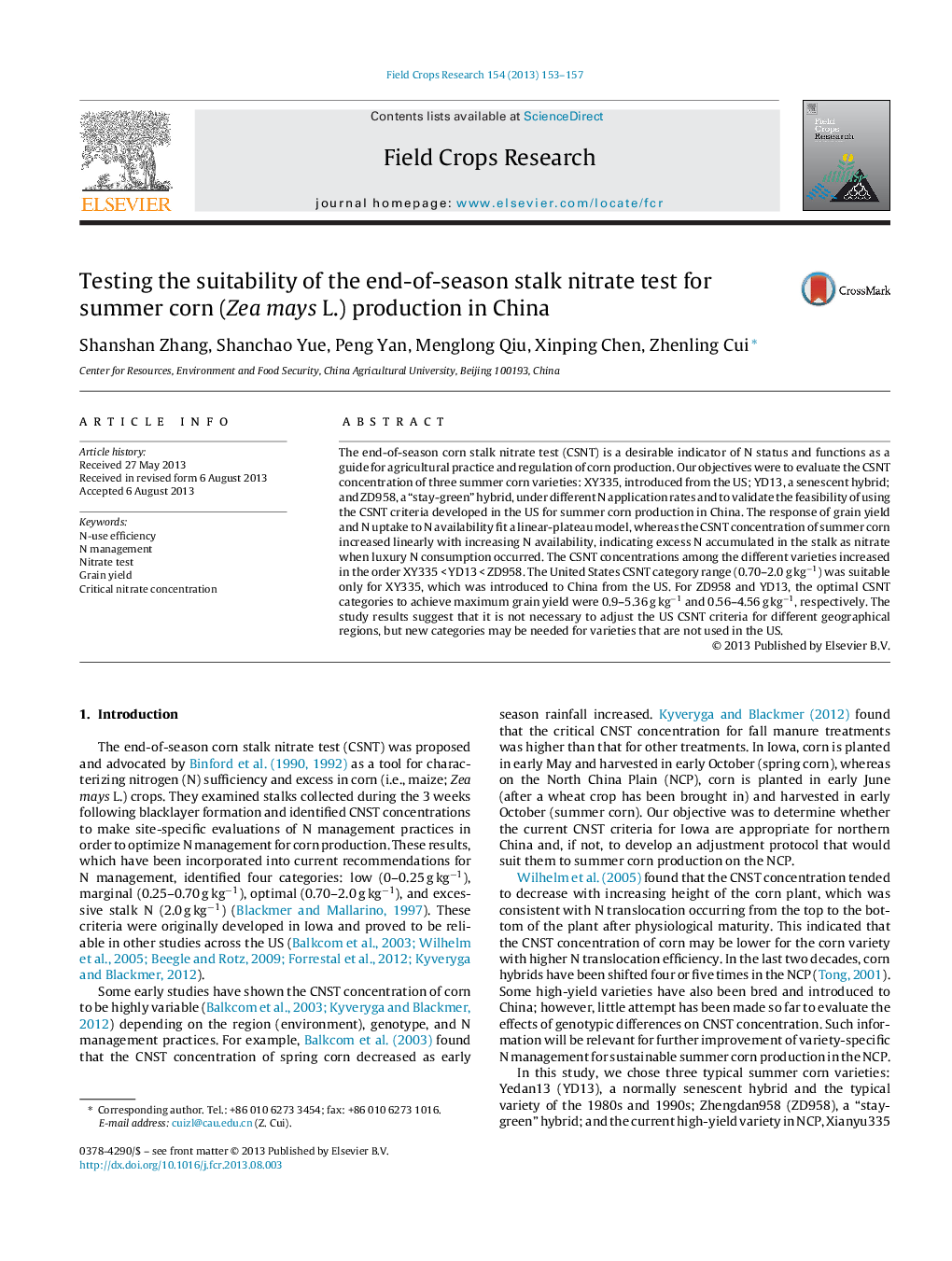| Article ID | Journal | Published Year | Pages | File Type |
|---|---|---|---|---|
| 6375170 | Field Crops Research | 2013 | 5 Pages |
Abstract
The end-of-season corn stalk nitrate test (CSNT) is a desirable indicator of N status and functions as a guide for agricultural practice and regulation of corn production. Our objectives were to evaluate the CSNT concentration of three summer corn varieties: XY335, introduced from the US; YD13, a senescent hybrid; and ZD958, a “stay-green” hybrid, under different N application rates and to validate the feasibility of using the CSNT criteria developed in the US for summer corn production in China. The response of grain yield and N uptake to N availability fit a linear-plateau model, whereas the CSNT concentration of summer corn increased linearly with increasing N availability, indicating excess N accumulated in the stalk as nitrate when luxury N consumption occurred. The CSNT concentrations among the different varieties increased in the order XY335 < YD13 < ZD958. The United States CSNT category range (0.70-2.0 g kgâ1) was suitable only for XY335, which was introduced to China from the US. For ZD958 and YD13, the optimal CSNT categories to achieve maximum grain yield were 0.9-5.36 g kgâ1 and 0.56-4.56 g kgâ1, respectively. The study results suggest that it is not necessary to adjust the US CSNT criteria for different geographical regions, but new categories may be needed for varieties that are not used in the US.
Related Topics
Life Sciences
Agricultural and Biological Sciences
Agronomy and Crop Science
Authors
Shanshan Zhang, Shanchao Yue, Peng Yan, Menglong Qiu, Xinping Chen, Zhenling Cui,
